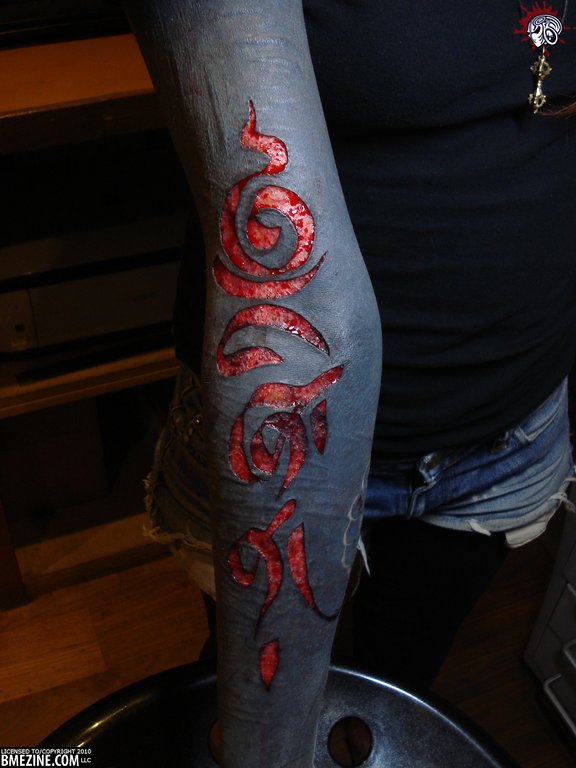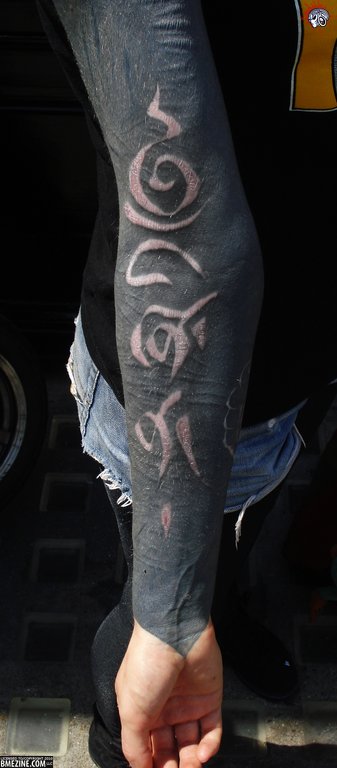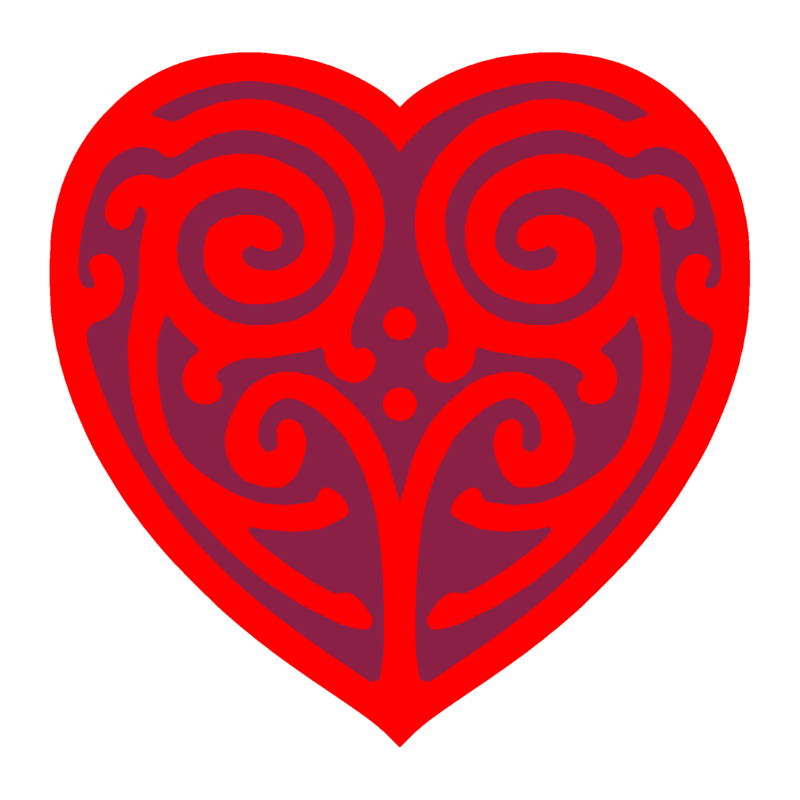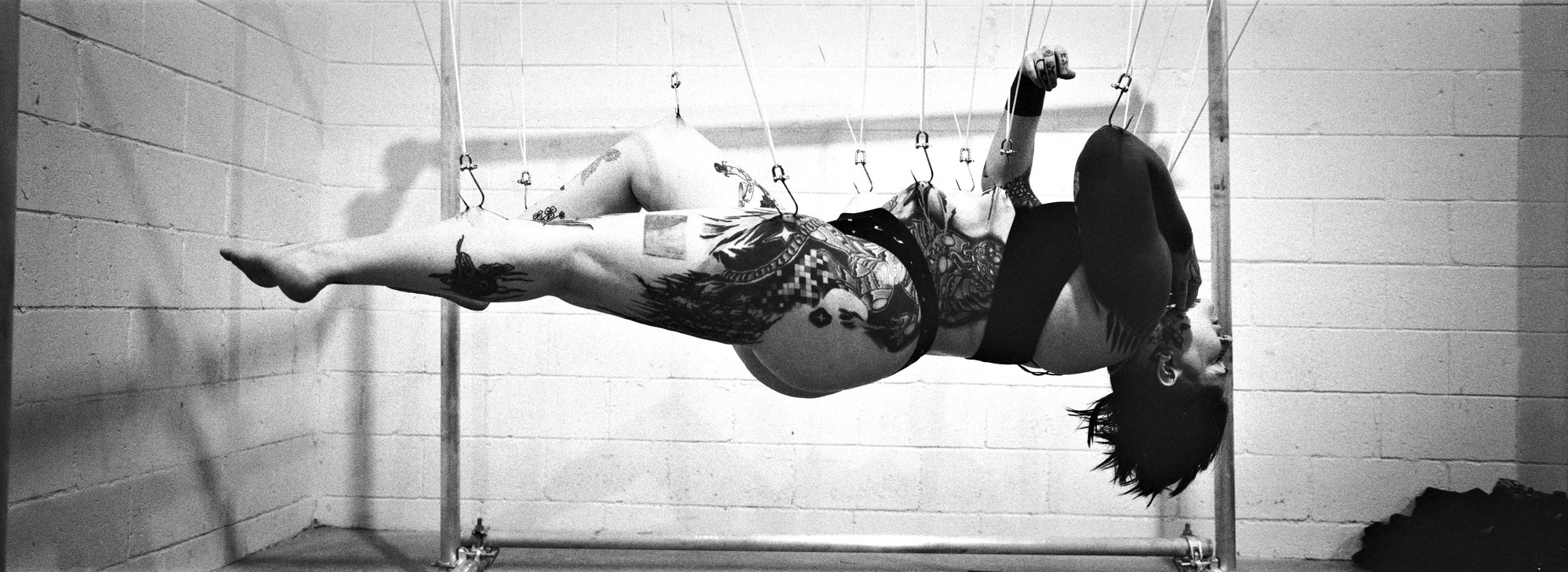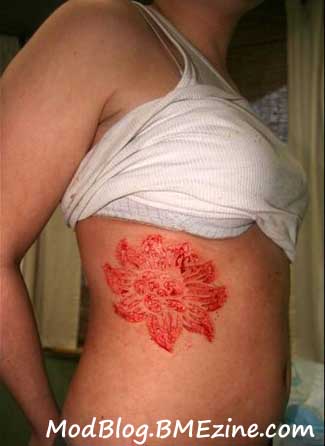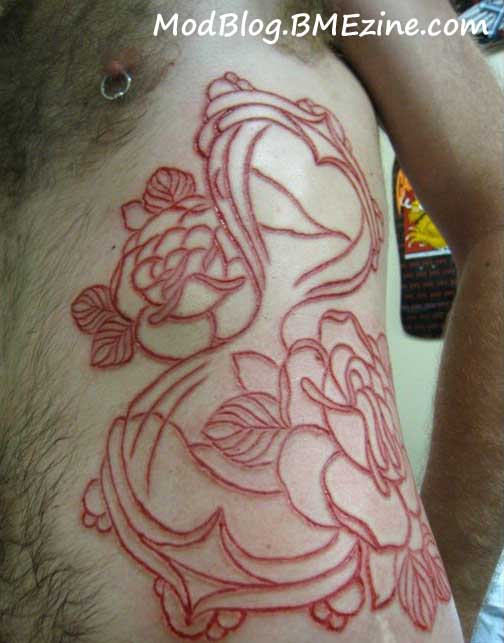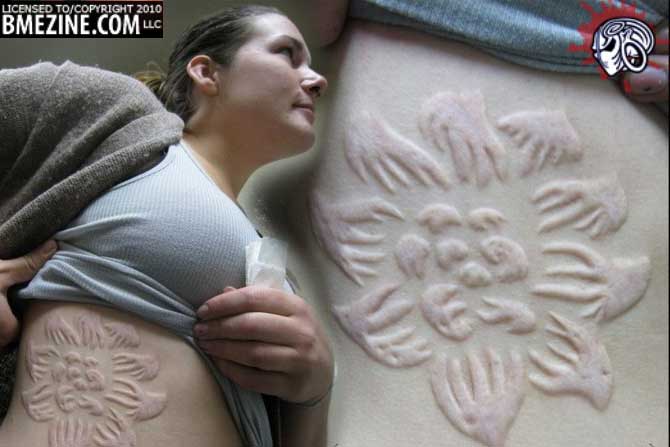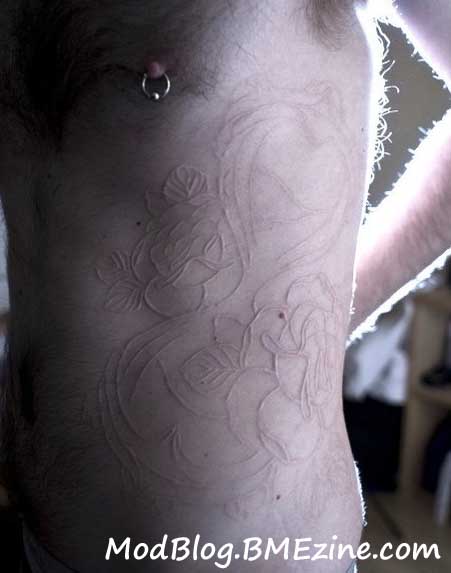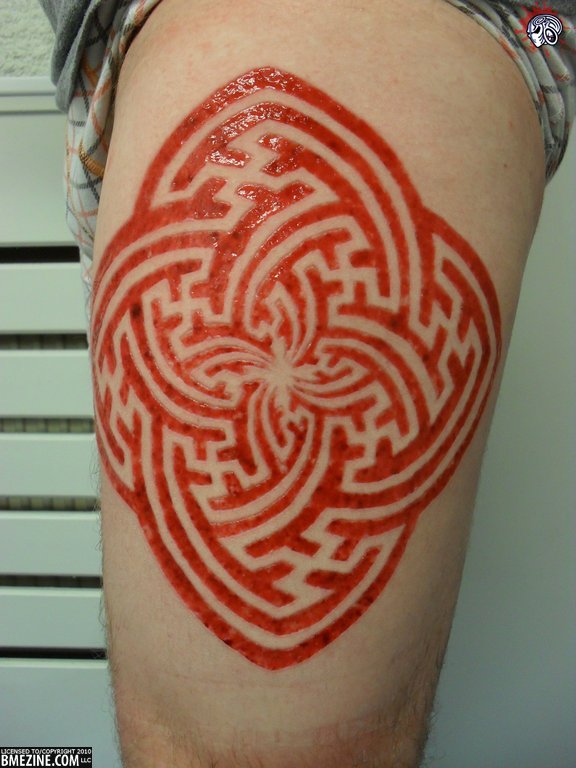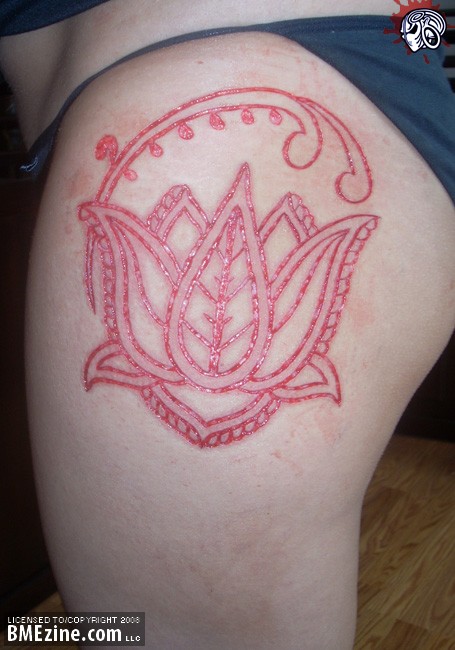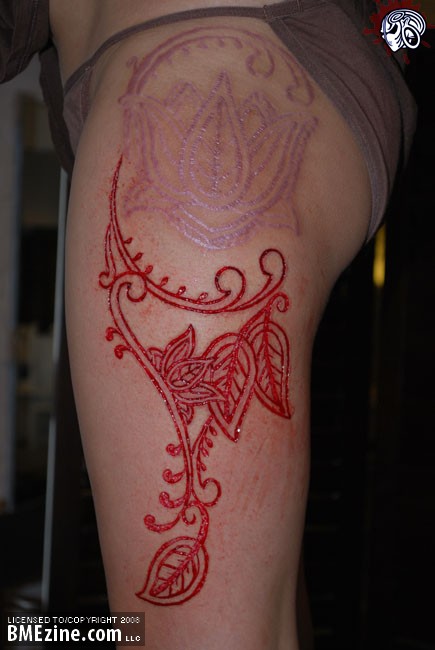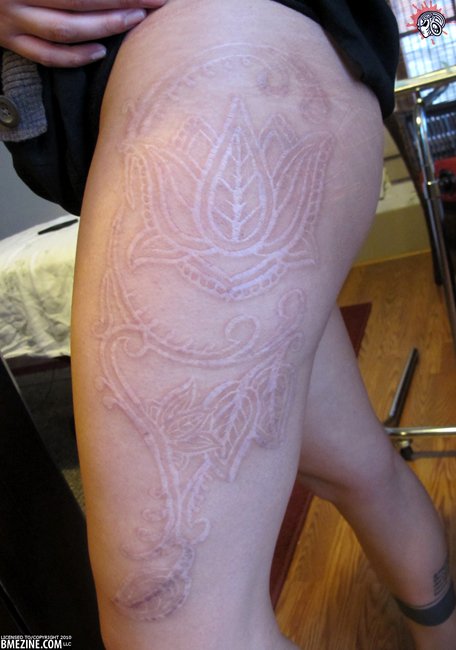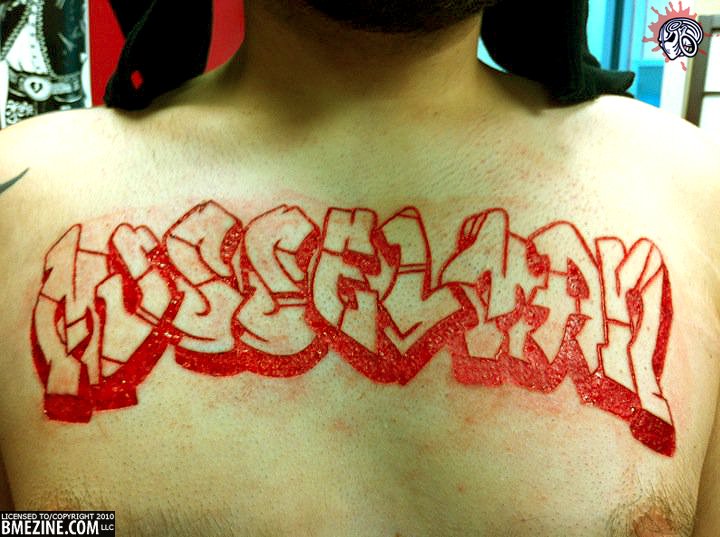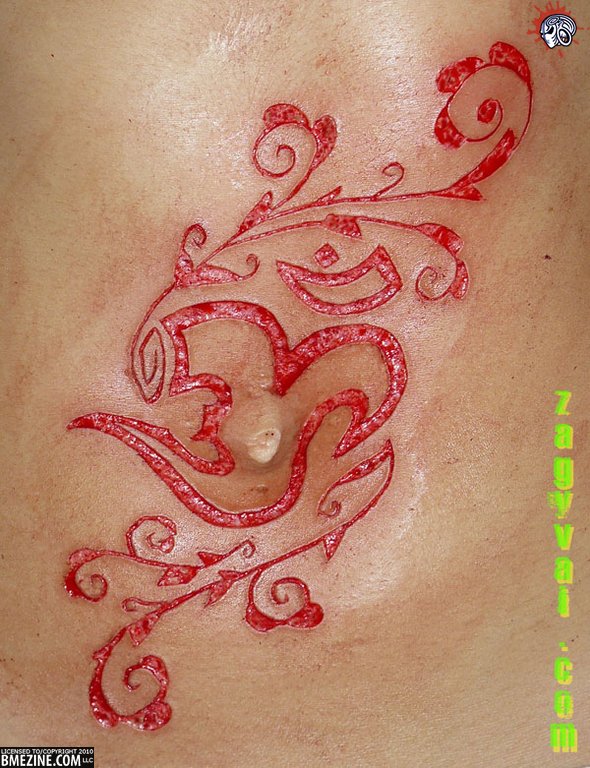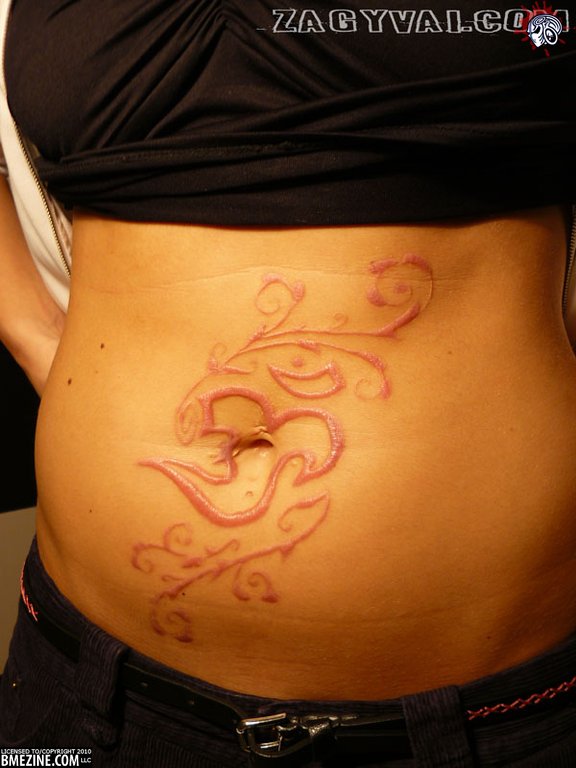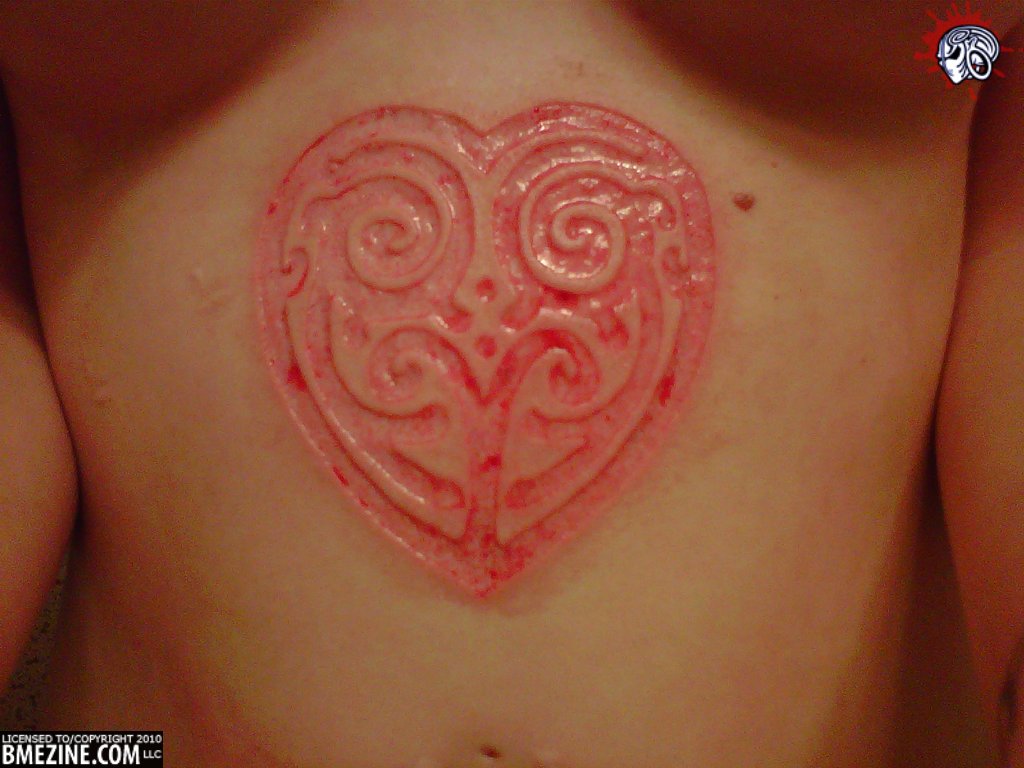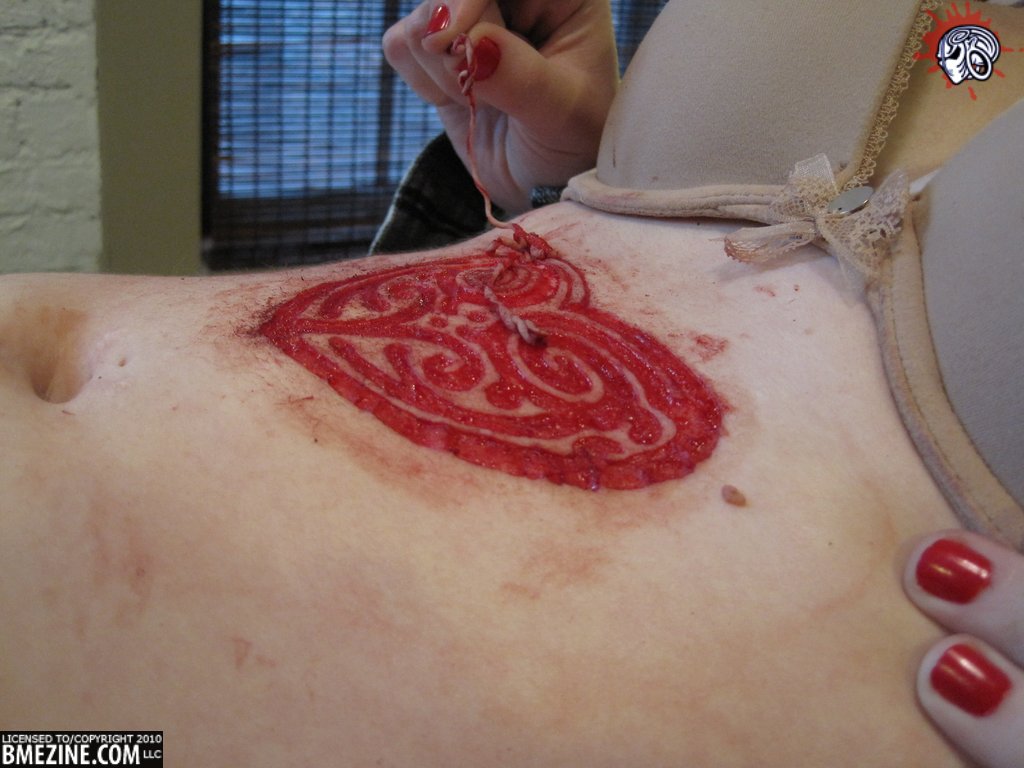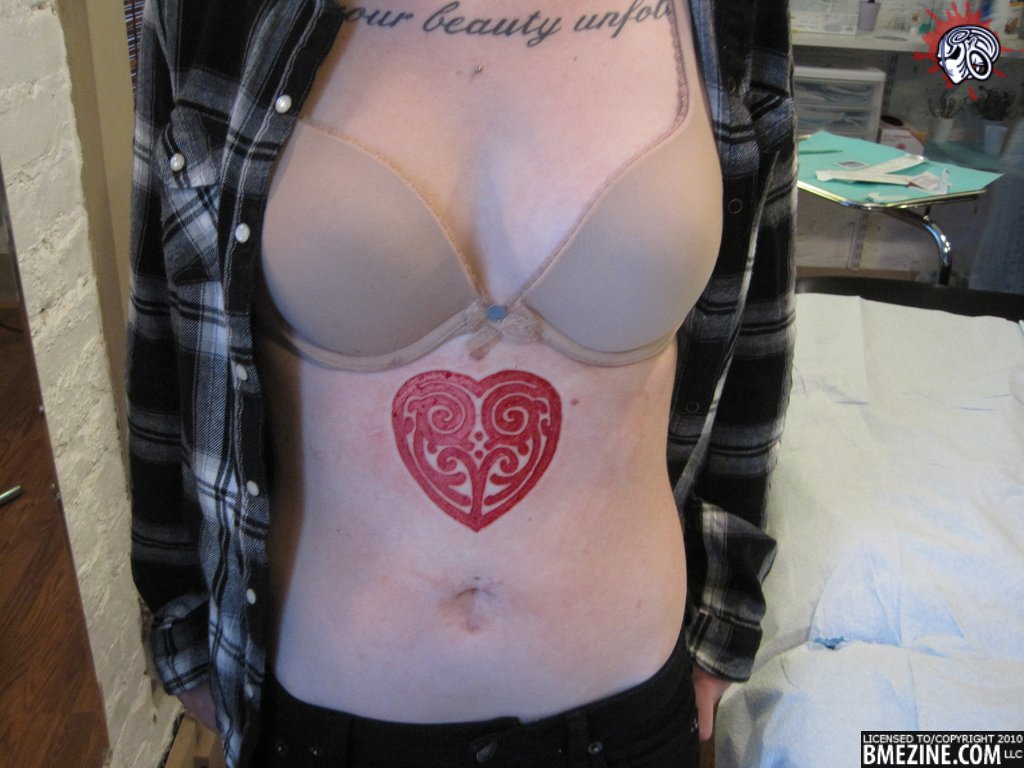A lot of the scarification pictures that we see are often clean. What I mean by that is they’re taken after the work has been finished, and the site has been cleaned up for a good photo. That or we see the healed scar some time later. One of the most significant aspects of scarification is the process. It’s not always just about the final result.
With a scar you have those first few cuts of the outline going in. The blade slicing open your body, breaking the surface of your outer shell. As it continues, the blade becomes a paintbrush, with every stroke a work of art being crafted out of your own flesh. Then the removal begins. These lines that have broken your skin are now used as point to remove whole sections of your flesh. As your armor peels away, you become exposed fully to the world. That thin layer of protection is forever gone, and you are forced to show the world what is truly inside you. Then as the scar begins to heal, a new layer begins to take the place of the old. While that old layer was a small barrier to the outside, this new barrier, having come from within is tougher, stronger, ready to show off what has come from deep inside you.
The process of a scar isn’t meant to be pristine. It is a raw experience, where you shed not only your flesh, but your blood. It is a cleansing ritual where the outside is removed, cleaned with the blood, and healed by the body into something new. While other modifications use metal and ink as a form of expression, the scar is created entirely by the body. Of course ink and metal can be incorporated into it depending on who the person is, but the process is on a base level the same.
In a recent addition to the skin removal scarification galley, we can see just how revealing this process is. Here you have a person in the process of having their flesh removed, revealing the person buried just beneath the surface.
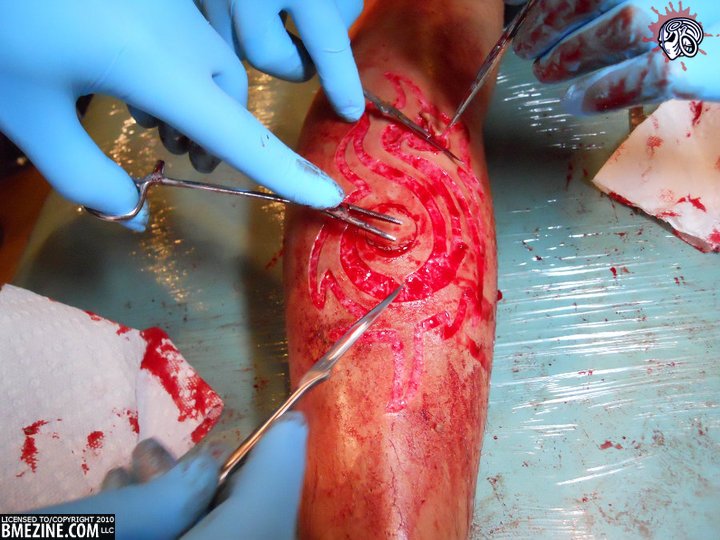
And here we have the final shot of this portion of the process, the traditional clean picture.
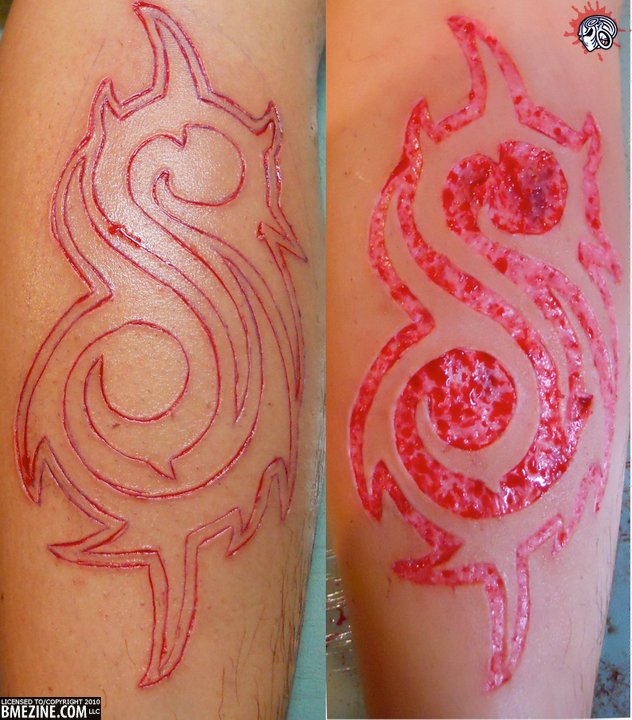
The rest of the images from the cutting can be found in the scarification gallery. And yes, there is more blood.
